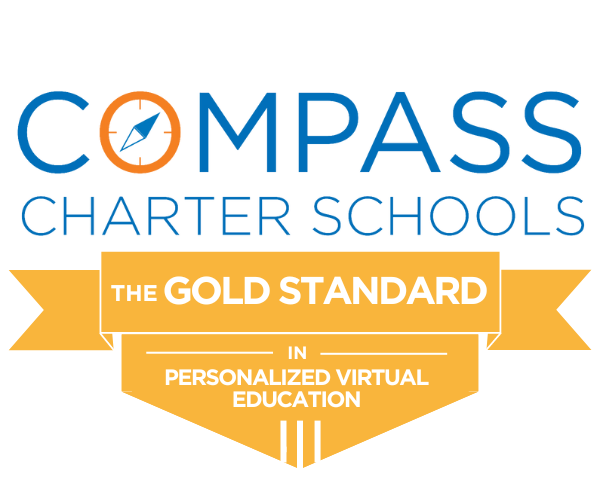One of the first assignments a Compass scholar takes is the STAR Renaissance diagnostic assessments in early literacy or mathematics and reading. STAR diagnostic assessments pinpoint a scholar’s academic needs and provide ongoing progress monitoring, showing whether scholars are on track to achieve end-of-year targets. Benchmark assessments are taken as a diagnostic assessment at the beginning and middle of the school year, and as a benchmark at the end of the school year. Supporting instruction is available to scholars throughout each semester, as assigned by our Supervising Teachers or as needed through our Multi-Tiered Systems of Support (MTSS) process. These assessments and instructional activities will help our teachers and staff support academic growth and close learning gaps for our scholars.
The Benefits of Assessments
STAR Renaissance assessments and Freckle instructional activities help our teachers and staff support academic growth:
STAR is a computer-adaptive diagnostic for early literacy or mathematics and reading that pinpoints scholar needs and contains ongoing progress monitoring, showing whether scholars are on track to achieve end-of-year targets.
STAR assessments help teachers better understand what scholars know and can do in the areas of early literacy, reading, or math. As a scholar takes the test, the software selects items based on the scholar’s responses. If the scholar answers correctly, the next item will be more difficult. If the scholar answers incorrectly, the next item will be less difficult. By adjusting the difficulty of the items to what scholars show they can or cannot do, the assessment is an accurate way to help teachers identify what skills scholars are ready to learn. Teachers use this information to guide their instruction.
- Star Early Literacy tests are used for scholars in grades pre-K through 3 (beginning readers who do not yet read independently or need early literacy skills assessed). There are 27 items and it generally takes fewer than 15 minutes for the scholar to complete the test.
- Star Reading tests are used for scholars in grades 1 through 12. Star Reading has 34 items and it generally takes fewer than 20 minutes for the scholar to complete the test.
- Star Math tests are used for scholars in grades 1 through 12. Star Math has 34 items and generally takes fewer than 25 minutes for the scholar to complete the test.
Watch this short video with your scholar to learn more about STAR assessments.



State Assessments
There are several state-mandated assessments that all California scholars enrolled in a public school take each year. The results from these tests provide parents/guardians, teachers, and educators with information about how well schools are doing in ensuring that scholars are college and career ready.
The California Dashboard Communications Toolkit
Informational materials that help explain the data reported on the California School Dashboard.
California Assessment of Student Performance and Progress
The California Assessment of Student Performance and Progress (CAASPP) is an adaptive computer assessment aligned with the Common Core State Standards (CCSS).
It is critical that eligible Compass scholars participate in these state tests. Non-participation results in the lowest possible score being assigned to that particular scholar, which lowers the standing and perception of Compass being a school in very high standing, and puts the school in jeopardy of having its charter renewed. Compass counts on the participation of all eligible scholars and families so that we may continue to serve your children.
English language arts/literacy (ELA) and mathematics tests are administered to scholars in grades three through eight and grade eleven to measure whether scholars are on track to college and career readiness. In grade eleven, results from the ELA and math assessments can be used as an indicator of college readiness.
The California Science Test (CAST) measures scholar acquisition of the California Next Generation Science Standards. It is administered to scholars in grades five and eight and once in high school.
California Spanish Assessments (CSA) for Reading/Language Arts is a computer-based assessment aligned with the California CCSS en Español. California offers the optional CSA for Reading/Language Arts, which are multiple-choice tests that allow Spanish-speaking English learners to demonstrate their knowledge of the California content standards.
The California Alternate Assessments (CAA) for ELA and mathematics are administered to scholars with the most significant cognitive disabilities in grades three through eight and eleven. The instructionally embedded CAA for science is administered in grades five and eight, and once in high school.
English Language Proficiency Assessments for California
The computer-based English Language Proficiency Assessments for California (ELPAC) is aligned with the 2012 California English Language Development Standards. It consists of two separate English Language Proficiency (ELP) assessments: one for the initial identification of scholars as Emerging Multilingual Scholar (EMS) and the other for the annual summative assessment to identify scholars’ English language proficiency level and to measure their progress in learning English.
Physical Fitness Test
The Physical Fitness Test (PFT) for scholars in California schools is the FitnessGram®. The main goal of the test is to help scholars in starting lifelong habits of regular physical activity. Scholars in grades five, seven, and nine take the fitness test in the spring of each school year.
Statewide Testing Information
Every year, California students take several statewide tests. When combined with other measures such as grades, class work, and teacher observations, these tests give families and teachers a more complete picture of their child’s learning. Parents and teachers can use the results to identify where scholars are doing well and where they might need more support.
CAASPP: Smarter Balanced Assessments for English Language Arts/Literacy (ELA) and Math
Who takes these tests? Scholars in grades 3–8 and grade 11.
What is the test format? The Smarter Balanced assessments are computer-based.
Which standards are tested? The California Common Core State Standards.
CAASPP: California Alternate Assessments (CAAs) for ELA and Math
Who takes these tests? Scholars in grades 3–8 and grade 11 whose individualized education program (IEP) identifies the use of alternate assessments.
What is the test format? The CAAs for ELA and math are computer-based tests that are administered one-on-one by a test examiner who is familiar with the scholar.
Which standards are tested? The California Common Core State Standards through the Core Content Connectors.
CAASPP: California Science Test (CAST)
Who takes the test? Scholars take the CAST in grades 5 and 8 and once in high school, either in grade 10, 11, or 12.
What is the test format? The CAST is computer-based.
Which standards are tested? The California Next Generation Science Standards (CA NGSS).
CAASPP: California Alternate Assessment (CAA) for Science
Who takes the test? Scholars whose IEP identifies the use of an alternate assessment take the CAA for Science in grades 5 and 8 and once in high school, either in grade 10, 11, or 12.
What is the test format? The CAA for Science is a series of four performance tasks that can be administered throughout the year as the content is taught.
Which standards are tested? Alternate achievement standards derived from the CA NGSS.
CAASPP: California Spanish Assessment (CSA)
Who takes the test? The CSA is an optional test for scholars in grades 3–12 that tests their Spanish reading, listening, and writing mechanics.
What is the test format? The CSA is computer-based.
Which standards are tested? The California Common Core State Standards en Español.
ELPAC
Who takes the test? Scholars who have a home language survey that lists a language other than English will take the Initial test, which identifies scholars as an Emerging Multilingual Scholar (EMS) or as initially fluent in English. Scholars who are classified as an EMS will take the Summative ELPAC every year until they are reclassified as proficient in English.
What is the test format? Both the Initial and Summative ELPAC are computer-based.
Which standards are tested? The 2012 California English Language Development Standards.
Alternate ELPAC
Who takes the test? Scholars whose IEP identifies the use of an alternate assessment and who have a home language survey that lists a language other than English will take the Alternate Initial ELPAC, which identifies scholars as an Emerging Multilingual Scholar (EMS) or as initially fluent in English. Scholars who are classified as an EMS will take the Alternate Summative ELPAC every year until they are reclassified as proficient in English.
What is the test format? Both the Alternate Initial and Alternate Summative ELPAC are computer-based.
Which standards are tested? Alternate achievement standards derived from the 2012 California English Language Development Standards.
Physical Fitness Test
Who takes the test? Scholars in grades 5, 7, and 9 will take the FITNESSGRAM®, which is the test used in California.
What is the test format? The test consists of five performance components: aerobic capacity, abdominal strength, trunk strength, upper body strength, and flexibility.
Which standards are tested? The Healthy Fitness Zones, which are established through the FITNESSGRAM®.
